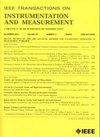一种考虑运动效应的水下SINS/USBL双响应器组合导航算法
IF 5.9
2区 工程技术
Q1 ENGINEERING, ELECTRICAL & ELECTRONIC
IEEE Transactions on Instrumentation and Measurement
Pub Date : 2025-06-18
DOI:10.1109/TIM.2025.3580832
引用次数: 0
摘要
为了解决水下航行器运动效应和超短基线(USBL)声信号常见误差对定位精度的影响,提出了一种基于捷联惯导系统(SINS)的超短基线距离校正(RC)模型。该模型在短时间内保持了高精度的特点。该模型利用惯导系统在USBL发射和接收过程中提供的高精度导航信息,对水下航行器运动效应引起的距离误差进行了校正。在此基础上,提出了一种新型USBL紧密集成导航模型(DT),该模型采用双应答器差分距离法来补偿USBL声信号中的常见误差。此外,为了有效降低水下异常点对组合导航定位精度的影响,采用卡方检测辅助的自适应鲁棒立方体卡尔曼滤波(ARCKF)算法对异常点进行抑制。在长江流域的仿真和试验表明,与传统的定位算法相比,所提出的定位模型和算法具有更高的定位精度。本文章由计算机程序翻译,如有差异,请以英文原文为准。
A Novel Underwater SINS/USBL Dual-Responder Integrated Navigation Algorithm Considering Motion Effects
In order to address the impact of underwater vehicle motion effects and common errors in ultrashort baseline (USBL) acoustic signals on positioning accuracy, this article proposes a USBL range correction (RC) model based on the strapdown inertial navigation system (SINS). The model retains high-precision characteristics for a short period. By utilizing the high-precision navigation information provided by the SINS during the USBL transmission and reception processes, this model corrects the distance errors caused by underwater vehicle motion effects. Based on this, a novel USBL tightly integrated navigation model (DT) is proposed, which uses the differential distance method with two transponders to compensate for common errors in USBL acoustic signals. In addition, to effectively reduce the impact of underwater outliers on the positioning accuracy of integrated navigation, a chi-square detection-assisted adaptive robust cubature Kalman filtering (ARCKF) algorithm is adopted to suppress outliers. Simulations and tests in the Yangtze River show that the proposed positioning model and algorithm achieve higher positioning accuracy compared to classical algorithms.
求助全文
通过发布文献求助,成功后即可免费获取论文全文。
去求助
来源期刊

IEEE Transactions on Instrumentation and Measurement
工程技术-工程:电子与电气
CiteScore
9.00
自引率
23.20%
发文量
1294
审稿时长
3.9 months
期刊介绍:
Papers are sought that address innovative solutions to the development and use of electrical and electronic instruments and equipment to measure, monitor and/or record physical phenomena for the purpose of advancing measurement science, methods, functionality and applications. The scope of these papers may encompass: (1) theory, methodology, and practice of measurement; (2) design, development and evaluation of instrumentation and measurement systems and components used in generating, acquiring, conditioning and processing signals; (3) analysis, representation, display, and preservation of the information obtained from a set of measurements; and (4) scientific and technical support to establishment and maintenance of technical standards in the field of Instrumentation and Measurement.
 求助内容:
求助内容: 应助结果提醒方式:
应助结果提醒方式:


